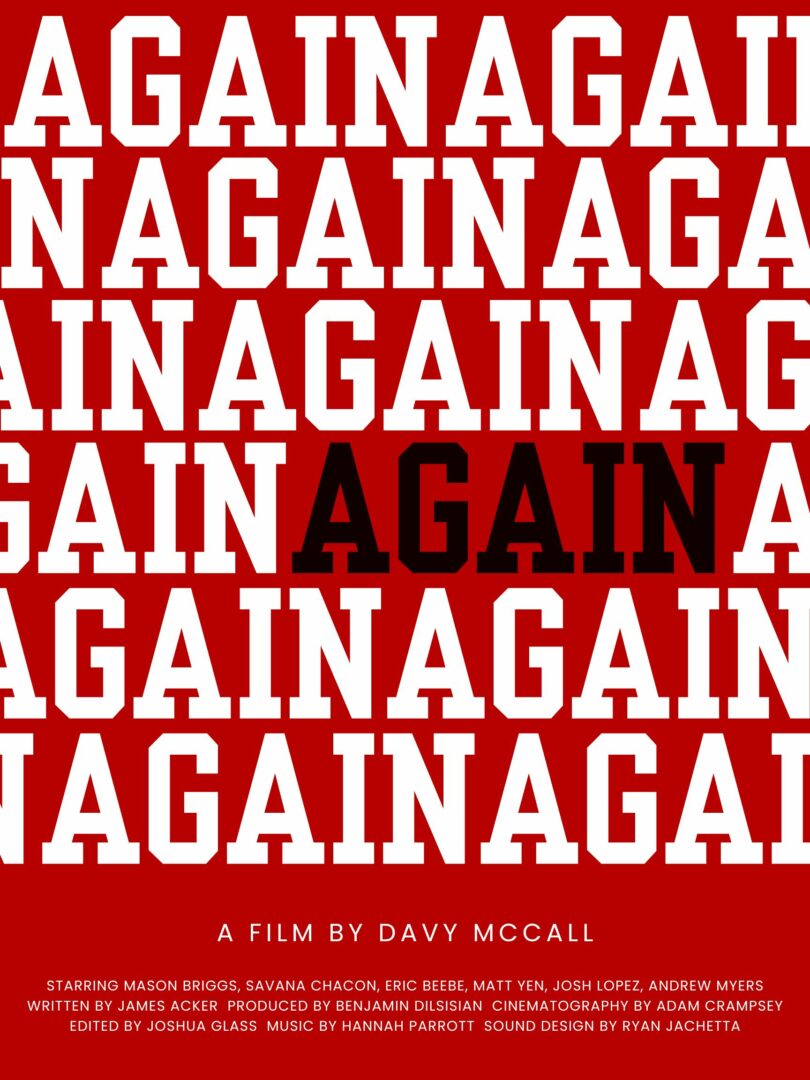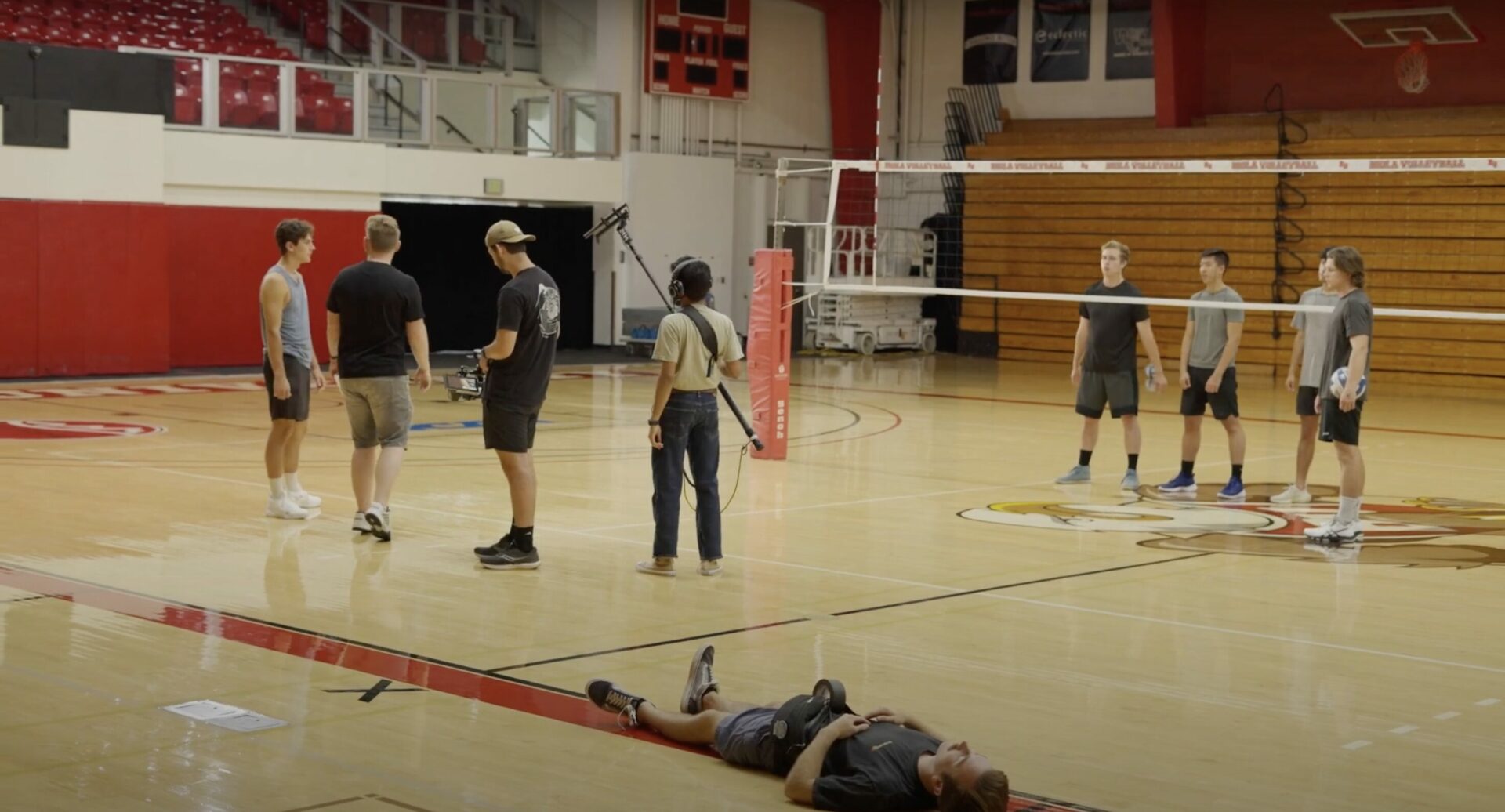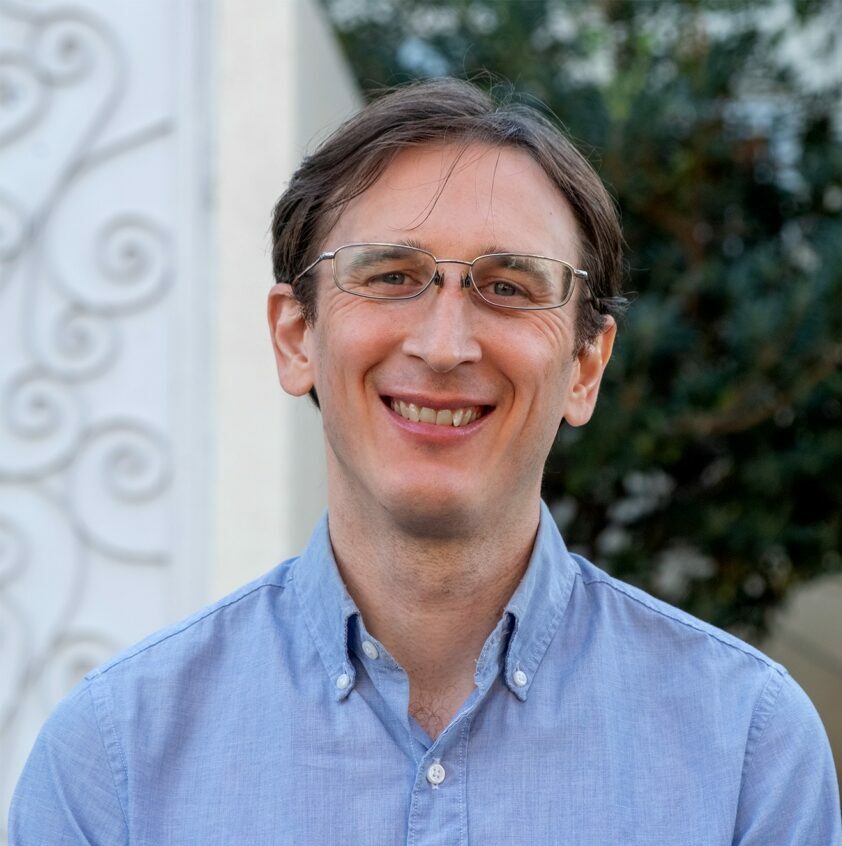Alright – so today we’ve got the honor of introducing you to Davy Mccall. We think you’ll enjoy our conversation, we’ve shared it below.
Davy, thanks so much for taking the time to share your insights and lessons with us today. Congrats on the online release of your volleyball short film, “AGAIN”. This is a niche concept…why did you make it?
Thank you so much! And wow, great question… Considering I’ve only played volleyball as research for this film, I’ll be honest—the reason I made it was as an avid anime fan. I’ve seen the show Haikyuu, which I absolutely love, and that show gave me a relationship with a sport I never would have had otherwise. What I love about Haikyuu is its deep connection to the sport itself. I feel the same level of excitement watching a world-ending battle between superheroes as I do watching a player decide how to hit a ball, why they’d touch it in a certain way, or how they strategize against their opponent to score a point.
As someone whose core ambition is to adapt and create content inspired by anime, I realized that adapting the energy and style of a sport into live action is much easier than trying to tackle a massive superhero showdown. BUT… that being said, I wanted to go even deeper. I kept saying this over and over to my actors, crew, and collaborators: “I want to make you care about HOW a ball is hit.” I didn’t want the focus to be on the players’ home lives or relationships; I wanted it to be entirely on the sport—on the timing of a play, the reason for a hit, and why it matters not just to the characters, but for the point itself, for the team, for the game.
In order to pull this off, I enlisted the help of James Acker, the best writer I know, who took a crude version of the script from me, and did his research to bring the sport more fully to life on the page, which allowed me to take the reins and pursue bringing it to life. He perfectly captured my intent for the short so that I could focus on the creation and style I wanted to capture. Almost every sports movie or show brushes over the complexity and beauty of the sport in favor of larger, overarching narratives. And usually all you see is the final point being made, you see the scoreboard change, and yay, they won… That’s usually the only thing a sport does in most movies or TV, a background vehicle or ornament to the larger story, which is great, but that’s not why I love Haikyuu.
Haikyuu TAUGHT me, a Halo and Warcraft nerd, volleyball! I can now watch Olympic sports and understand the plays, the tactics, the timing, all because of this animated show. I wanted to stay as small and specific as humanly possible. One drill. One hit. The way you hit it and why it matters—not just emotionally, but mechanically, for the game. I wanted the character arcs and evolution to emerge as a product of the sport, not the other way around.
This was a lofty goal, kind of strange, and honestly, I thought I failed when I first showed the film to friends and family. Most of them didn’t find it particularly unique or compelling. I even submitted it to TIFF, and while they liked it and considered it, they ultimately went in another direction. Rather than investing in more festival submissions, I decided to post it online to see if a random audience of strangers would connect with my intent.
I was only hoping for a little bit of response, but now that the film has over 175k views, I’m really excited. It feels like maybe my ambition wasn’t entirely misplaced—maybe we’re onto something after all!

The film has a unique style…can you tell us about how you came up with this type of cinematography?
So…the style was really almost everything for this project.
As mentioned before, it borrows heavily from Haikyuu, but you’ll also notice that everything was done practically—no computer-generated images or compositing for the style—which was a major goal of mine, to see if I could make it translate only with real world techniques, to make it feel grounded and authentic. The question I set out to answer was: Can I capture the style of anime without relying on effects, grandiose stakes, or spectacle?
What we decided on was to create extremely kinetic shots that make you feel deeply connected to the form, nature, and quality of volleyball. To my knowledge and research, I haven’t found any other sports film that gets this close to a sport—besides perhaps small moments in Challengers. Up until the last 10 years, making shots like this was completely impossible. It requires extremely small cameras with incredible slow-motion capabilities, high-quality gimbals, expert-level camera operation, focus pulling, and, in this case, even some autofocus capabilities. The Sony FX3 camera allowed us to combine all these features. Honestly without the FX3 we would have struggled tremendously to pull this off at all. Thank you Sony!
I wanted the audience to feel like they are literally flying through the air with the actors, the ball, and the spike drill practice scenes. I hope and believe we accomplished something special with this approach. It’s incredibly rewarding to work so hard to achieve something so niche and then see a random audience of people find it, connect with it, and enjoy it.
We largely invented this new style honestly. But what’s most exciting is, with the lessons we’ve learned about how to shoot this style, now I know how much further we can take it. It can go so much further, bigger and better in nearly every way. With the right resources and opportunity and relationships that I’ve gained from making this short, I think we can make something truly epic in the future. Executives, hit me up!
Casting must have been tricky for a film like this…how did you go about that?
Oh man…casting was the craziest part of this whole thing. I first tried to cast athletic actors who “could play volleyball,” but the audition process was unlike anything I’d done before. I took my iPhone, went to a gym with a net and volleyballs, and tested some shots with them. Even though they had volleyball experience, I immediately realized this strategy—casting actors and then teaching them volleyball—was going to fail completely. They couldn’t hit the ball consistently, and the coordination of camera movement and gameplay was nearly impossible. I thought the movie was doomed.
So, I switched tactics. I went to the beaches, found volleyball tournaments, and started walking up to pretty much everyone, asking if they’d like to be in a movie. That’s how I found an incredible player, Cameron Jorgensen, a D1 player from San Diego State, who volunteered to help with some tests. We got a gym for an afternoon and did some test shots with the help of a women’s volleyball team. That was the moment I realized: holy crap, this might actually work! But there was a new issue: none of them wanted to say lines or act. They could only be the players, not the characters.
Determined, I went to six more volleyball tournaments, five college volleyball games, and spoke to about ten managers and coaches. I sent dozens of emails to teams and got several responses offering to help, but when it came to asking for acting, they all ghosted me. I was crushed. I knew the idea could work if someone trusted me, but I was failing to convince anyone. One day, randomly, while walking the halls at a film school where I teach, I ran into one of my students—a tall, handsome guy about six-foot-five—who stopped me and said, “Watch this.” He jumped into the air and headbutted a ceiling tile, knocking it down. He had jumped four feet in the air like it was nothing. I said, “You must play volleyball.” Turns out, he was a nationally ranked setter in high school. I asked him for help with casting, and through a connection of his, I was finally introduced to Mason Briggs, the eventual star of the film and a member of the USA Volleyball team!
Mason was incredibly supportive and willing to do whatever it took to help me get the movie made. But even he ran into the same problem when asking around—nobody else wanted to act. Eventually, Mason asked his real-life girlfriend, Savana, to step in and act alongside him. Neither of them had ever acted before, but we were all up to the challenge.
But then, disaster struck again. Mason had to travel out of the country for training with the USA team, which meant neither he nor Savana would be able to do the movie. I was back to square one… AGAIN. And this was all just days before we were scheduled to start shooting.
In a last-ditch effort, I went on a desperate mission to a dozen beaches, asking anyone and everyone if they’d act in my movie. Most people rejected me outright, and those who said yes never responded to texts. It was one of the most awkward and humbling experiences of my life. Meanwhile, I had already reserved the crew, the locations, the equipment, and an entire gym for days of shooting. I didn’t have the heart to tell my crew that the whole thing was about to fall apart.
Then, the miracle happened. THE DAY BEFORE the shoot, Mason called me to say his trip was canceled, and both he and Savana were available and ready to do it. It was the absolute last-second save I needed. But even then, three of the volleyball players who were supposed to be side characters canceled on the morning of production. I had to scramble and put my own crew into the roles. Only one of them had volleyball experience—shoutout to Matt Yen for coming in clutch with the blocks and some “ground beef” improv!
It was quite literally the 11th hour, and the whole time it felt like everything was held together by sheer willpower and prayer. My producer, Ben Dilsisian, will tell you I almost pulled the plug the day before we started. But I prayed to God for help, and we walked into production on faith that somehow, it would all work out. And it did!
In the end, the film came together because of an incredible casting miracle. The only person who would act and save this film was one of the best liberos in the world, Mason Briggs, alongside his girlfriend Savana and his good friend Eric Beebe (the setter). Praise Jesus for pulling this one off.

What’s next for you, after this film?
Well! Last summer I went on a bit of an adventure across the country in an RV and a ragtag crew…
I shot a feature film with Thomas McNamara, Sandy Eels, and my trusty sound designer from this film, Ryan Jachetta. It’s a micro-budget feature production—one of the smallest imaginable—with a crew of just two people and two actors. The story is about a young man, afraid of flying, driving across the country in the RV he lives in so he can be there for his dying cat. It’s called Just Be There and is currently in post-production. I’ll be sharing those details with you guys as that film nears its release this year!
Thank you so much for including me in this article, I love sharing with you guys!
Contact Info:
- Email: [email protected]
- Instagram: @doggoeswoof
- Other:

so if you or someone you know deserves recognition please let us know here.




